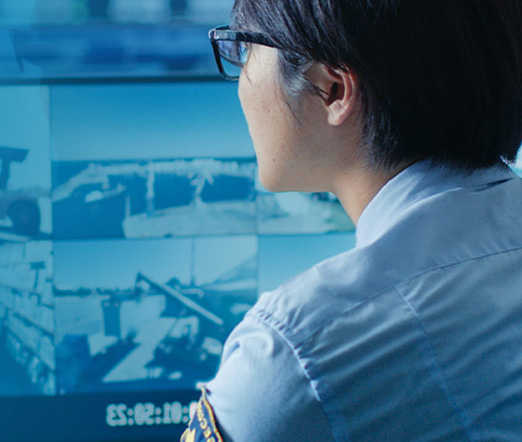A video surveillance system is an essential part of protecting the inside and outside of structures, such as facilities, buildings and homes. Security cameras can help achieve this by monitoring all kinds of activity within the property. Before installing a security camera, you'll need to make sure it is connected to a dependable power source. Power supplies for low-voltage security cameras are more than just a plug and play – to know which power supply you will need will depend on how many cameras you're installing, how much power they need and the location of each one.
Different types of power supplies for your security cameras
Most modern applications, such as closed-circuit television or CCTV cameras, require a high-quality power supply that provides seamless voltage transition, prevents damage to devices and contains adjustable output currents. To ensure your security cameras are working properly, here are a few power configurations that work well with CCTV cameras, such as IP (Internet Protocol), HDoC, dummy and analog cameras.
Power adapters – The power adapter is the familiar route when it comes to security camera installation. Choose this power source when installing four cameras or less for smaller CCTV systems. There are several types of adapters, including AC (Alternating Current), DC (Direct Current) or AC/DC adapters.
Check your cameras’ compatibility requirements to understand what adapter to use in order to prevent permanent damage to your cameras.
Power supply box – If you're going for a more organized approach for your installation, consider a power supply box. This method protects security cameras from burnouts, power fuses or overloads while keeping the cable wires in one secure location. Power supply boxes are a time-saver when you need to hook up more than four cameras to your security system.
UPS – An uninterrupted power supply (UPS) is another great option if you're looking for reliability, added security and monitoring for your CCTV cameras. This system provides an adequate amount of power to CCTV cameras in the case of a power outage.
PoE (Power Over Ethernet) — A single PoE cable will provide power and network signals to devices such as digital IP cameras so that you won't need to buy extra cables for the security system. PoE offers a simple installation process, which can save you time and money on a project installation.
Battery-powered – Wireless and time-efficient, this type of power supply makes setting up your CCTV system quicker without having wire congestion. These power supplies have the advantage of working even when there is a power outage. One downside to using this type is having to repeatedly recharge the battery.
Solar-powered – Just like battery-powered cameras, solar-powered security cameras are another reliable source for a wireless option, with the added benefits of being eco-friendly and perfect for sites that lack an external power source. This type of setup requires a solar panel and a security camera that comes with rechargeable batteries.
Which voltage to consider
In order to keep security cameras from burning out, they need a high-quality power supply with consistent voltage for optimal durability. If you're curious to find out how much power your security camera needs, consider the camera’s power specifications. How much voltage does it have? The higher the voltage the less risk of data failure. Low-voltage security cameras normally use three primary voltages which are 12VDC, 24VAC and 120VAC.
12VDC – The most common power supply voltage that is suitable for just about any security camera. Consider this amount of voltage when you are installing a security camera system outdoors for distances that are difficult to reach and causes voltage drops.
24VAC – This voltage current can run longer distances than 12VDC. Therefore, low voltage security cameras with 24VAC do not necessarily need to be installed near a power outlet. If your customers need outdoor security installation, this is a good option for them.
1120VAC – Most U.S. household appliances will require this amount of voltage indoors. If security cameras are too far to reach each other, then more power might be needed. You can either choose a higher voltage up to 220VAC to supply enough power to multiple cameras or you can make sure the cameras are installed near a power outlet.
Features to consider
Protection - Power outages can happen at any moment and data loss from security cameras can become a bigger problem than your customers anticipated. That's why it is crucial to make sure you have plenty of battery backup to ensure your security system keeps running even in unpredictable moments.
A surge protector gives peace of mind during and after installation. This device serves in protecting sensitive video surveillance cameras during a voltage spike which can weaken the lifespan of your devices. It is recommended to use this protection for CCTV cameras, video recorders, monitors and other network devices needed for the job.
80% rule – To avoid overloading the system, a good rule of thumb is to use the 80% rule. This means you should use 80% of the power supply's maximum capacity to sustain the power's durability and avoid overloading.
Voltage drops – Voltage drop occurs when there is an ongoing resistance in a circuit that could be caused by a longer wire run, lower voltage or an increased load. To avoid this, use a shorter, thicker power cable to prevent potential safety risks and damage to equipment.
For further assistance
ADI’s Systems Design team provides recommendations and best practice knowledge to ensure successful system integration. Our team of experts can help dealers and installers find the right products, solutions and technologies for the job while giving the know-how and best pricing to facilitate the process.


